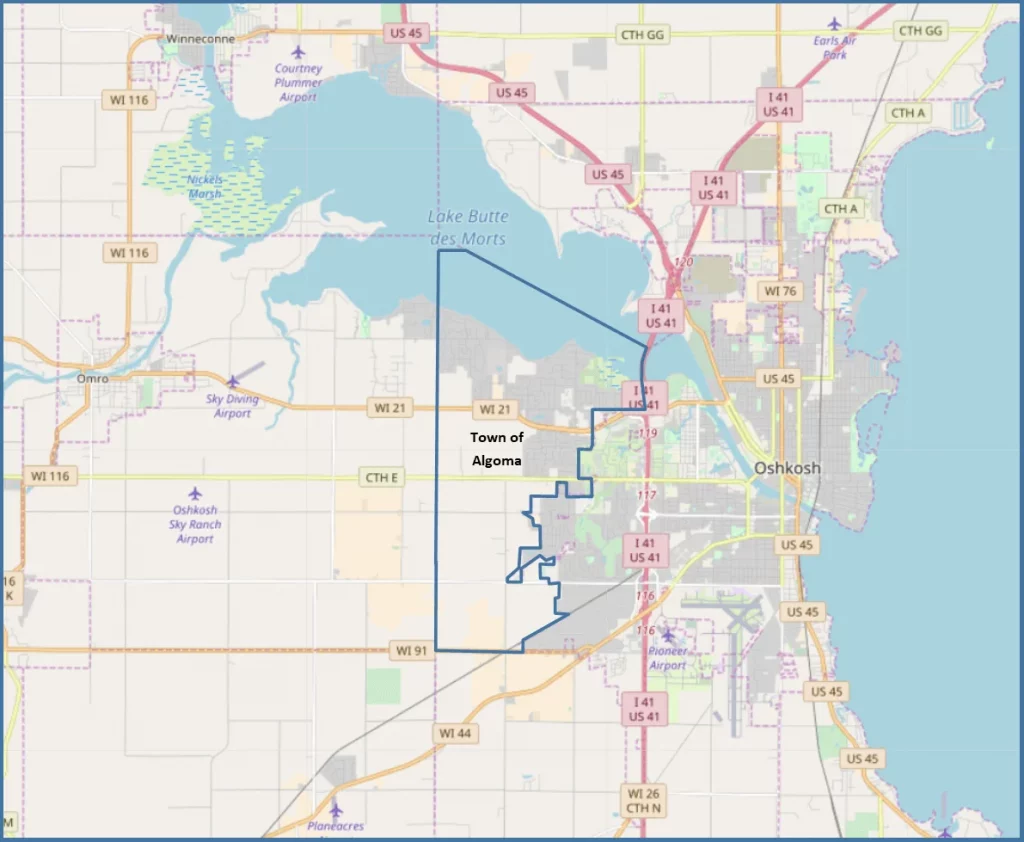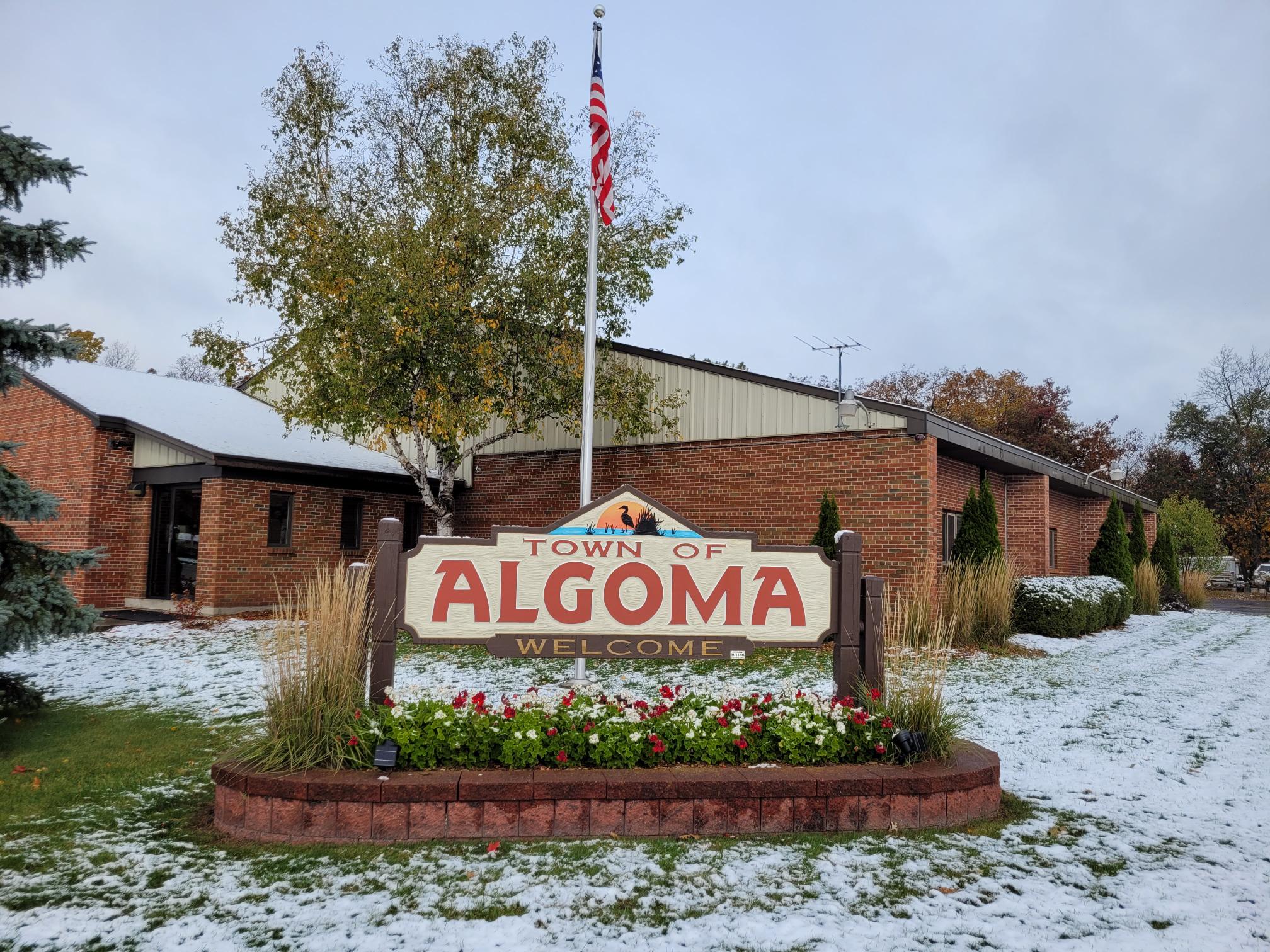
Town History
It was documented that between 1803-1860 the lands lying between the Mississippi and Ohio Rivers and encompassing the present states of Ohio, Michigan, Indiana, Illinois, Wisconsin, as well as part of upper Minnesota were called the Northwest Territory. In 1846, a document was signed setting aside a portion of the land for a canal, which encompassed the Fox River.
Algoma is bounded north and north east by Lake Butte des Morts and the Fox River; east by Oshkosh and Nekimi; and west by Omro. Algoma was originally a part of the old Town of Brighton that was reorganized by the Legislature in 1847. In 1849, President Zachary Taylor signed a document releasing some of these lands, thereby making them available for purchase for homesteads. The document released lands described as Town 18, Range 16, Section 21, further described as the Town of Algoma. Some of these lands were documented as being purchased as early as 1847, although the State of Wisconsin was not officially formed until 1848. At this time, the Town of Algoma officially became part of the state.
Algoma consisted mostly of burr oak openings with small prairies or natural meadows, while in Sec. 28 and 29 contained a large grove of forest timber. The village of Algoma (to be later absorbed into the fifth ward of the City of Oshkosh) was started in the summer of 1846 by C. J. Coon, Thomas C. Baker, James Whittemore, D. W. Forman, Wm. Daggett, and others. A store was opened by Mr. Baker; an excellent saw mill was started by Messrs. Forman & Daggett; and a Hotel built by Mr. Coon. The hotel was located on the trail from Fort Winnebago to Green Bay and became the main point on the river. The town was rapidly settled. Its agricultural advantages were equal to any in the country, while its location in regard to the river and lake enhanced its value. Farms could be bought in the Town of Algoma from fifteen to fifty dollars per acre based on the character and amount of improvements. By 1855, there were five schools, 316 scholars, and population of 850. (Excerpts From the book, Geographical and Statistical History of the County of Winnebago, Published by Martin Mitchel and Joseph H. Osborn; Markham and Felrer, Book and Job Printers, Oshkosh, Wisconsin, 1856)
After the turn of the century, the old village of Algoma had been assimilated into the Fifth Ward of Oshkosh. The rural portion of the Town had not yet been annexed in to the city, but over the next five decades, its fertile soils would be platted into residential lots. Houses lined the high banks of Lake Butte des Morts which the residents named Oakwood. Nearby was “Waldie,” the home of Oshkosh Industrialist Edgar P. Sawyer, who was the son of Senator Philetus Sawyer a leading personality in the 19th Century Wisconsin. Indian Mounds were present throughout the area. As housing and businesses built-up along Superhighway 41 located in the center of the Town of Algoma, these burial grounds were not a priority. The City of Oshkosh jumped the highway and urbanity sprawled west through Algoma and drawing closer to the formerly distant burg of Omro. With the large tracts of land taken from the Town by the city and the area covered by Lake Butte des Morts, there was not much left of the once sprawling Town of Algoma. The Town experienced little growth in population during the first half of the 19th Century. However, the post Word War II baby boom accelerated the Town’s population from 840 to 4,500.
State Highway 21, often referred to in one form or another as the Omro Road, passed through some fine farm country. As a major dirt road in the area, residents would sit outside watching the procession of cars, farm equipment, and horse and buggies pass by. By nightfall, the traffic diminished with many of the summer people at Oakwood returned to their cottages. An electric trolley traveled on Omro Road back and forth between Omro and Oshkosh from 1902 to 1925. As time passed, the trolley was removed and Omro Road was paved with concrete and filled with buses and cars. (Excerpts From the book, In This Century, A History of Winnebago County in the 20th Century, Published by Winnebago County Sesquicentennial Committee, New Past Press, Inc., Friendship, Wisconsin, 1998)
How We Started
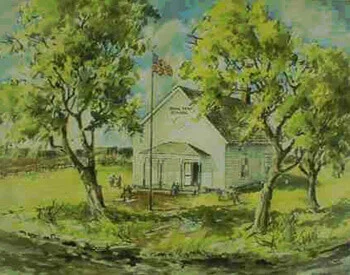
1865
The painting, “Spring at Quail Trap School” by Nile Behnke. The Quail Trap School (circa 1865 to 1954) stood on the present site of Oakwood School. The name “quail trap” originated from neighborhood boys setting traps to catch quail in the vicinity.
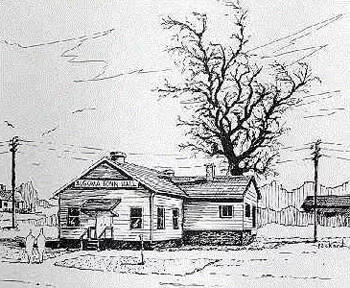
1877
The original town hall building was built in 1872 and was called the Algoma Grange Hall. An early town board meeting was recorded on April 17, 1877.
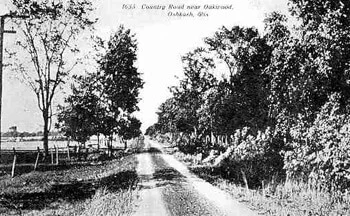
1910
Looking South on North Oakwood Road from Lake Butte des Morts, circa 1910.
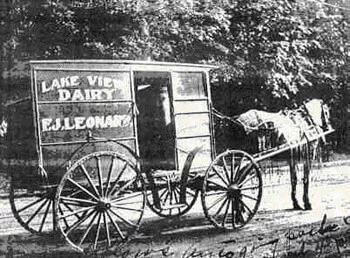
1919
Frank Leonard Milk Wagon (circa 1919). Leonard farmed on the east side of Leonard Point Road to the lake, hence the name Leonard Point Road and Lane. Other Town of Algoma dairy farmers who delivered milk to the City of Oshkosh: Wood, Cowan, Kohls, Grunske, Zelhofer, Moon, and Madison.
Demographics
Overview of the Area
As the second largest community in the greater Oshkosh area, Algoma is uniquely situated for future community and business growth. With a population of 7,249 (2018 estimate), Algoma is a growing residential community with three parks, well-maintained roads, local fire department, affordable amenities, stable staff, and visionary elected officials. STH-21 runs east to west through the northern half of Algoma, and STH-91 serves as the Town’s southern border. The Town will continue to see business and commercial development along these two heavily traveled transportation corridors. Algoma is bounded by the City of Oshkosh to the east, Lake Butte des Morts to the north, and the towns of Omro and Nekimi to the west and south. Algoma’s municipal borders encompass 9.52 square miles (6,091 acres) of land. The Town is home to some of the highest quality residential neighborhoods in the Fox Valley. With its close proximity to the City of Oshkosh, Algoma has experienced many positive developments over the past 20 years and will continue to see this growth well into the future. If you are looking for a place to work, live or establish a business, the Town of Algoma is the perfect location for you.
